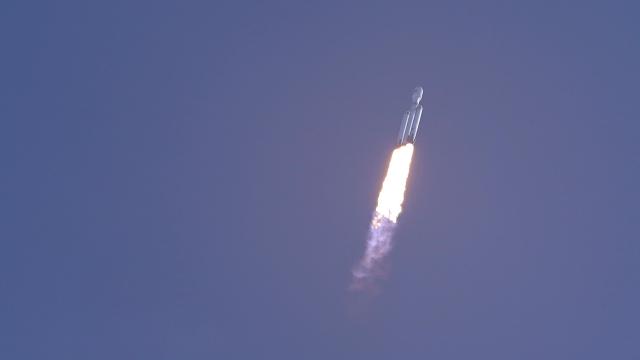The fog was thick this morning at Kennedy Space Centre in Florida, but that didn’t stop SpaceX from launching its rarely flown Falcon Heavy, nor did it prevent thrilling views of the spectacle.
Falcon Heavy is currently the most powerful rocket in the world, so it’s a big deal when SpaceX has the opportunity to light this oversized candle. The rocket was recruited for the USSF-44 mission chartered by the U.S. Defence Department, in which an unspecified payload was delivered to geosynchronous orbit (GEO) — a distant Earth orbit in which an object orbits at the same speed as Earth’s rotation. Details about the mission are scant, but we can be sure that Falcon Heavy was one of the few rockets on Earth capable of carrying out the launch.
Static fire test
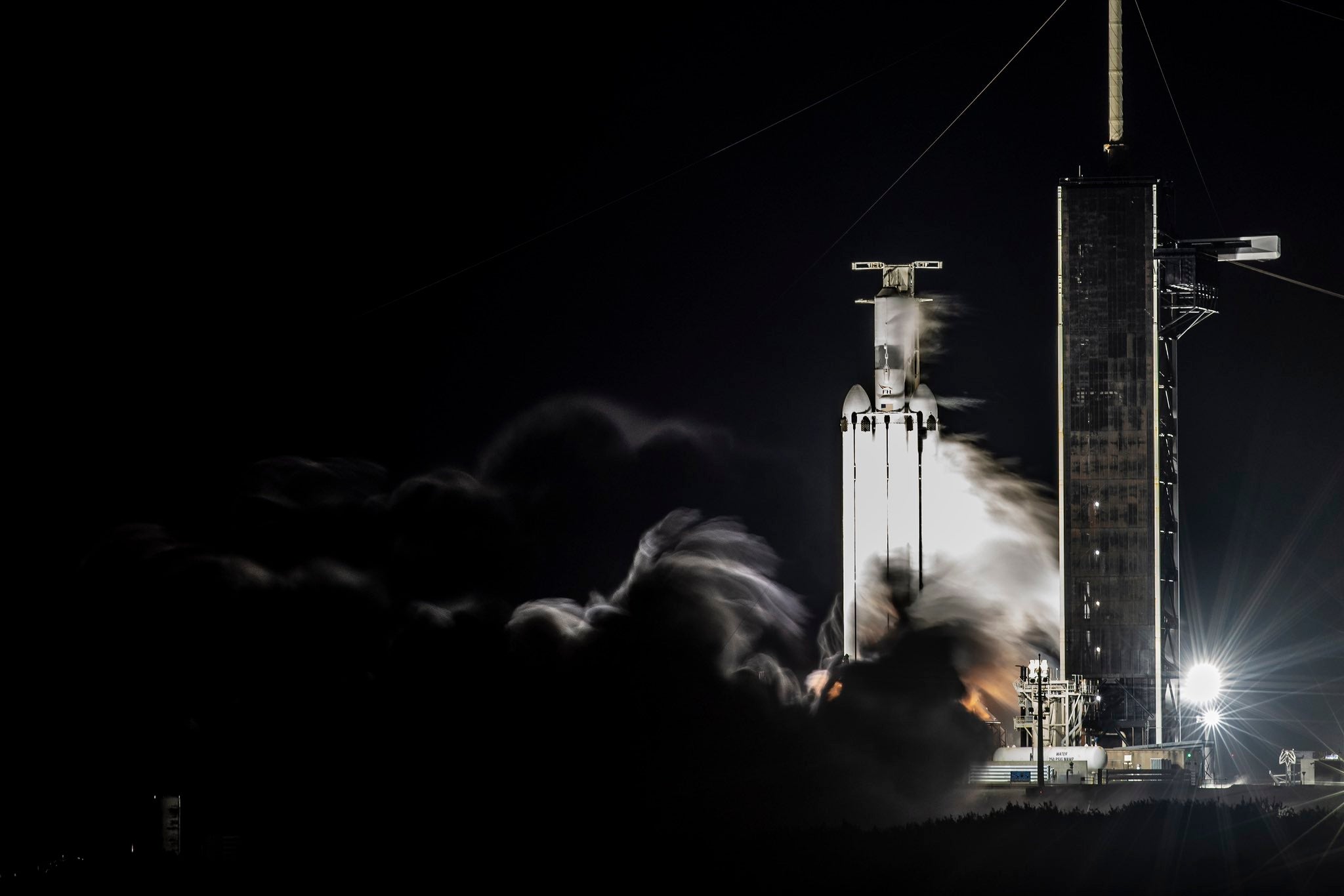
SpaceX performed a static fire test of the Falcon Heavy on October 27, setting the stage for the November 1 launch of the USSF-44 mission.
To the pad
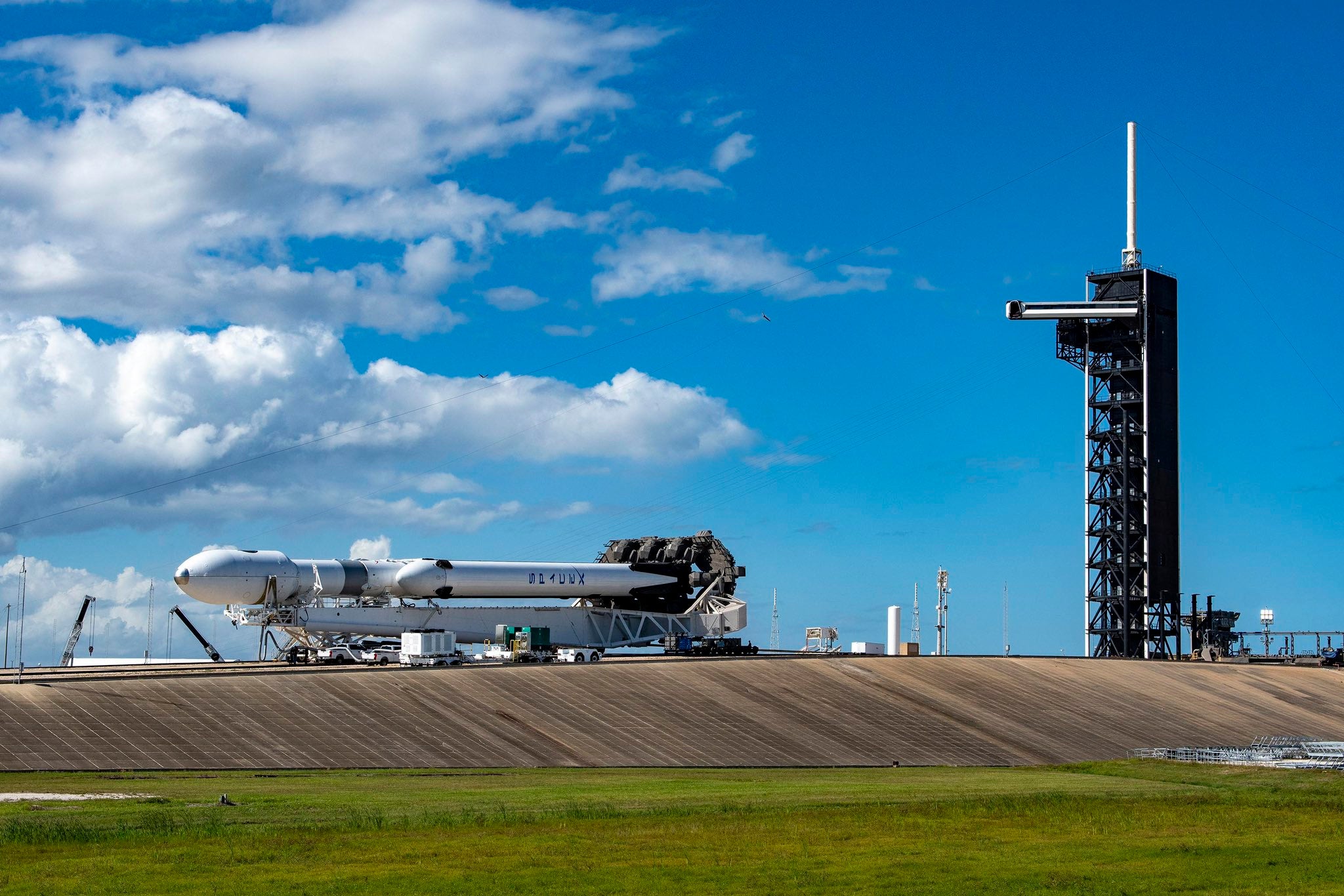
Ground crews transported the 70.10 m-tall (70-metre) Falcon Heavy to Launch Complex 39A at Kennedy Space Centre, Florida, on October 31.
Going vertical
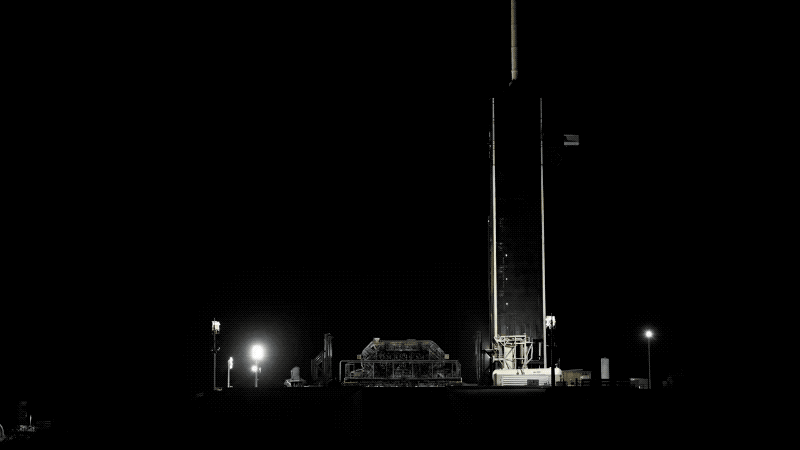
Like a vampire rising, the Falcon Heavy went vertical at the launch pad on Halloween night. SpaceX uses a transporter-erector combo for Falcon Heavy launches, which transports, raises, and supports the rocket when vertical.
Foggy launch

The conditions at Florida’s Kennedy Space Centre were unusually foggy on the morning of the launch, but the weather didn’t warrant a scrub. The rocket took off as planned at 9:41 a.m. ET on Tuesday, November 1.
Leaving the tower
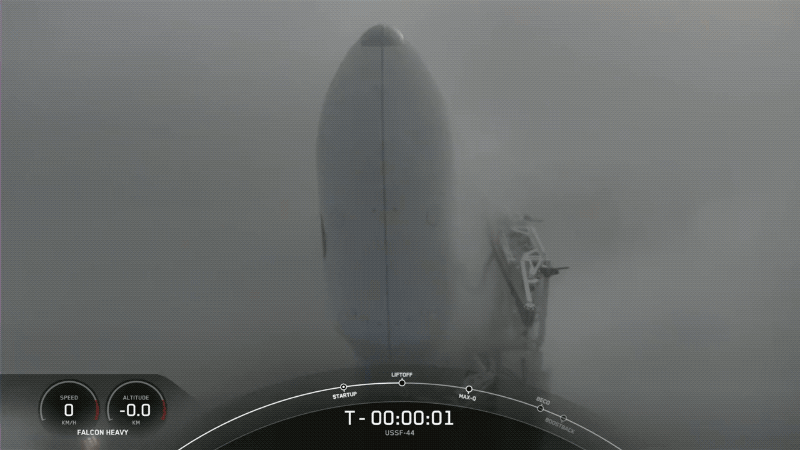
The Falcon Heavy is basically three Falcon 9 engine cores strapped together, in which two serve as the side boosters. The combined 27 Merlin engines provide 5 million pounds of thrust at launch, enabling the rocket to carry 64 metric tons to low Earth orbit and 27 metric tons to geosynchronous orbit.
POV

A view from the rocket 33 seconds into the flight and as Falcon Heavy was 3 km (2.5 kilometres) above the ground.
First flight since 2019
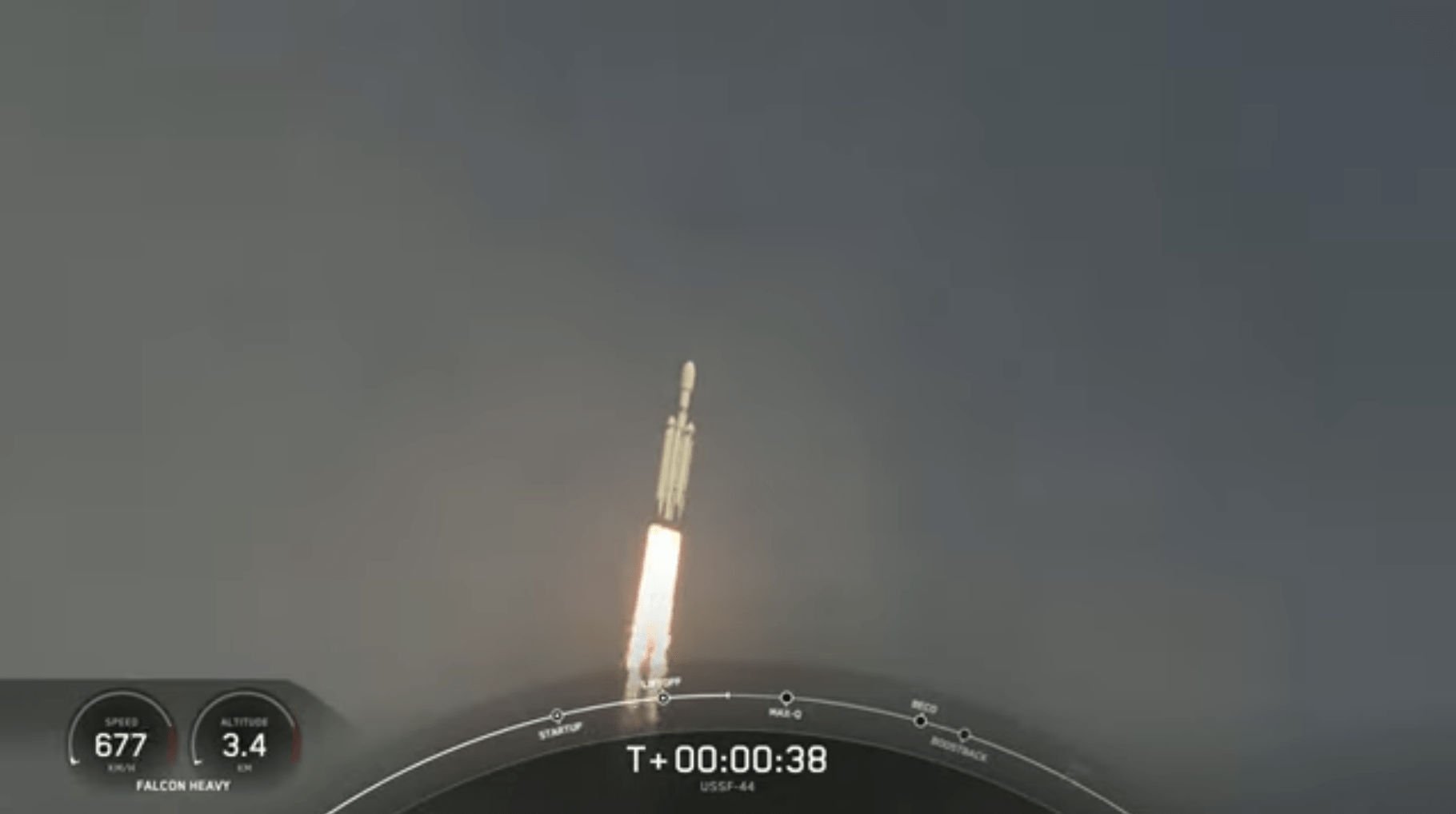
The launch marked the fourth flight of the Falcon Heavy since debuting in 2018 and its first in three years. The powerful rocket doesn’t get used very often, as satellite operators don’t usually need to deliver satellites past low Earth orbit and because of the excessive launch costs. Development delays with payloads are another reason for the gap in launches, including this one. That said, Falcon Heavy is about to get busy, with a dozen missions planned in the next year.
Fly like an eagle
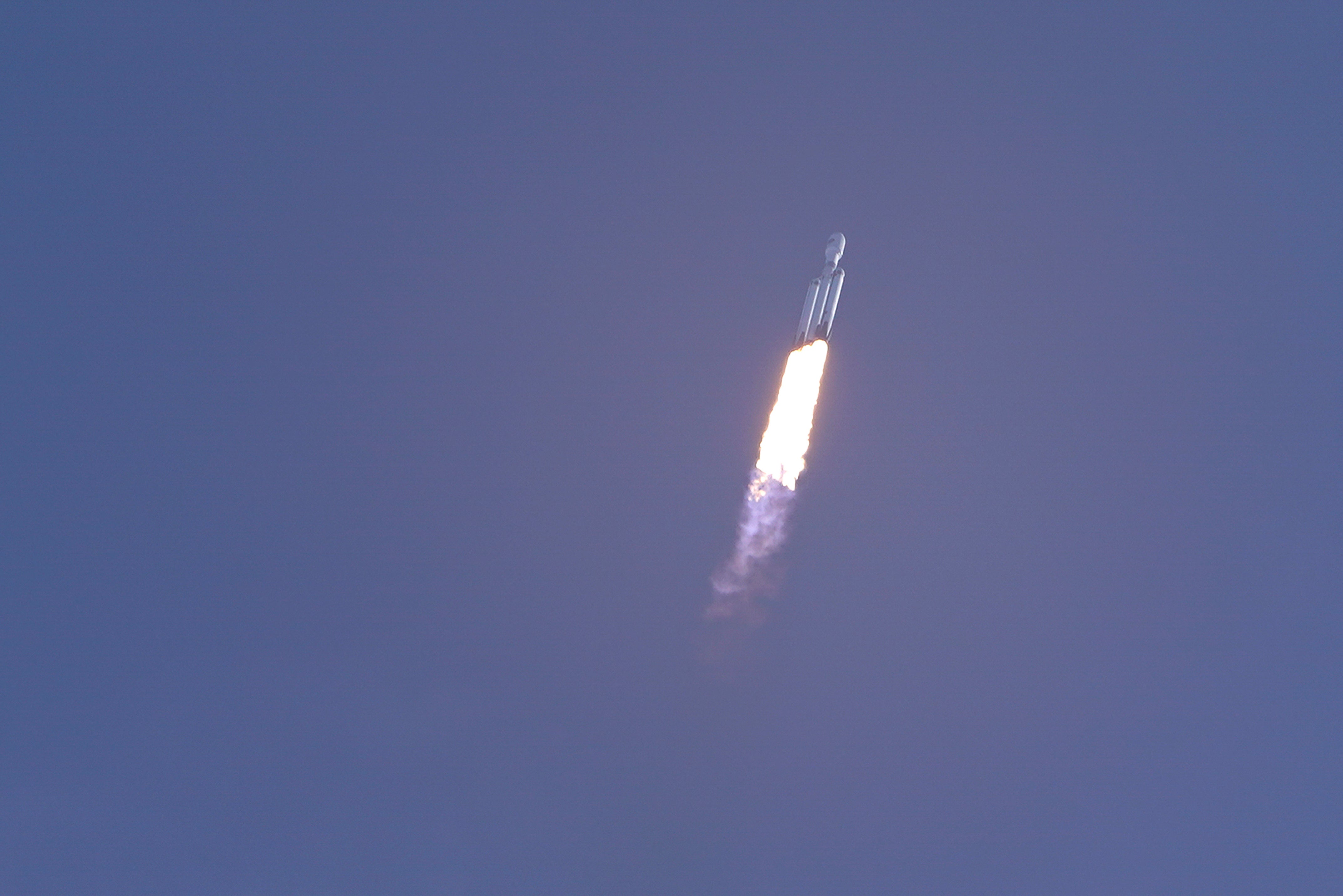
The rocket carried an undisclosed payload for the U.S. Space Force, as well as some secondary payloads destined for GEO. These included Lockheed Martin’s LINUSS-A 1 and LINUSS-A 2 cubesats and the TETRA-1 prototype satellite built by Boeing subsidiary Millennium Space Systems.
27 Merlin engines lit
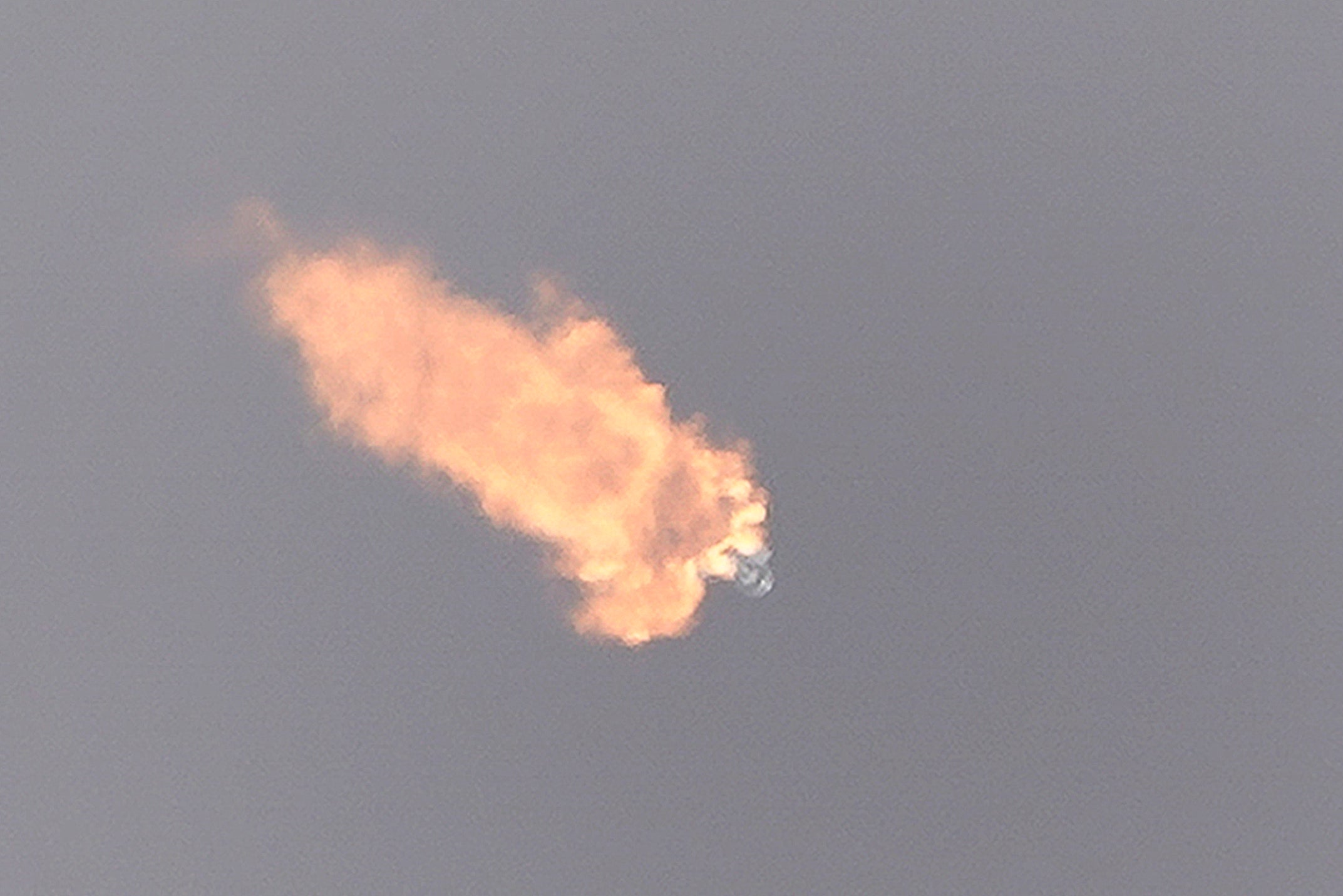
This stunning view shows the protracted plume trailing behind the rocket. This was SpaceX’s 50th launch of the year, representing a cadence of one orbital launch every 6.08 days.
Feel the rumble
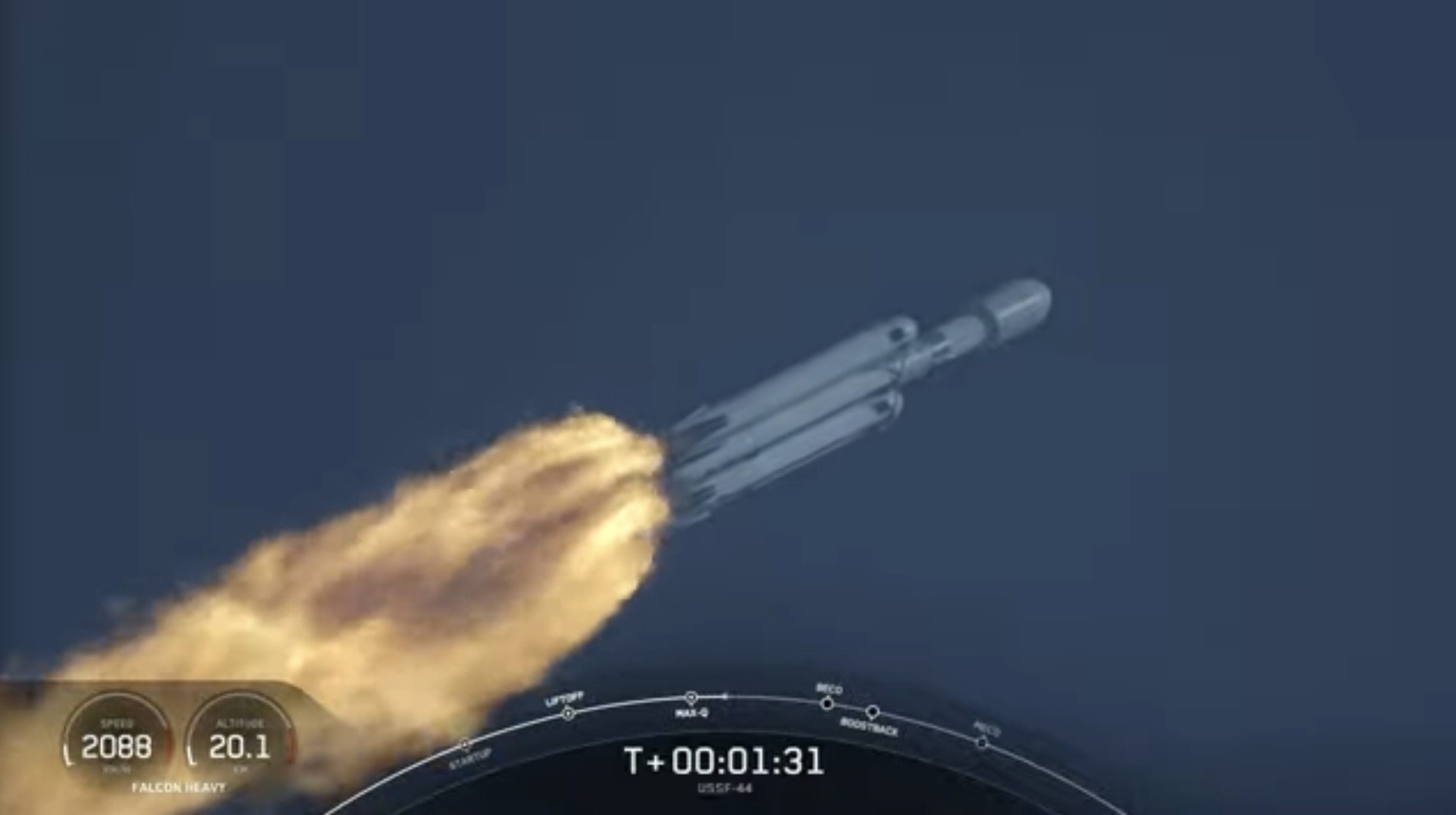
The Falcon Heavy as it appeared in the SpaceX live feed shortly past the 90-second mark of the USSF-44 mission. The rocket sent a classified payload — likely a military communications satellite — to GEO. The mission marked SpaceX’s first direct transfer to GEO, an orbital band located one-tenth of the distance to the Moon.
Bye bye boosters
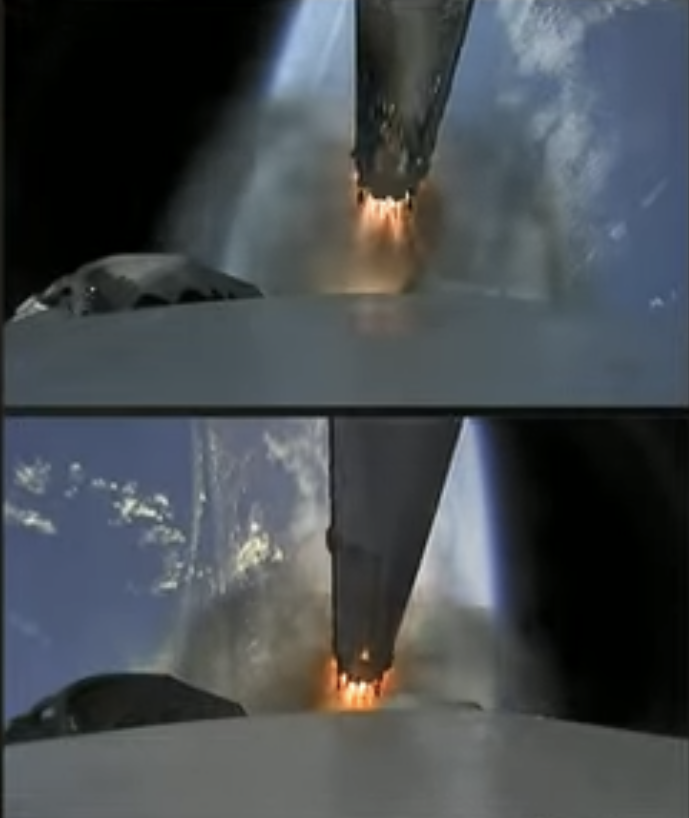
The reusable side boosters bid farewell to the rocket at the 2:38 mark of the mission.
GEO awaits
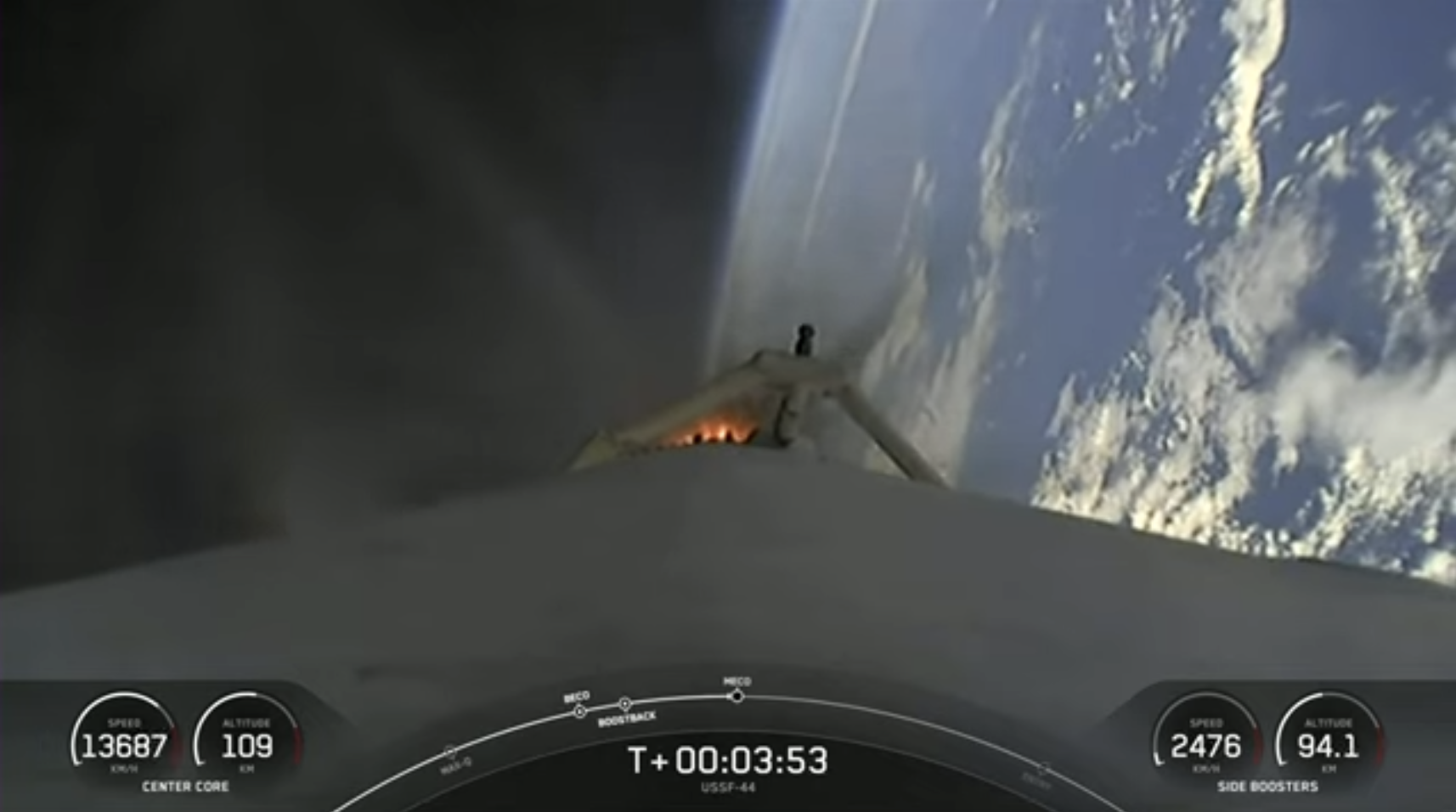
At the request of Space Force, SpaceX ended its live feed earlier than usual. This sweet view with Earth in the background was one of the final images shown of the rocket in space. Following the booster separation, the centre core, which won’t be recovered, continued to climb for a while longer before falling back to Earth. The upper stage engine will perform a pair of burns prior to transferring the classified payloads directly to GEO, which is expected to happen on Tuesday, November 1 .
Double the boosters, double the fun
The two side boosters landed within seconds of one another at Landing Zone 1 and 2 at Cape Canaveral Space Force Station. SpaceX intends to reuse the two boosters for the upcoming Falcon Heavy USSF-67 mission in January. We’ll be watching, as these launches never grow old.
